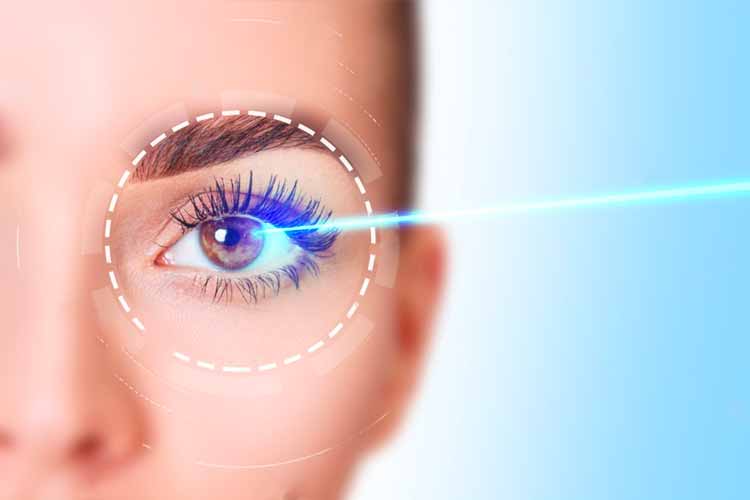LASER EYE SURGERY
Eye laser surgery is performed to eliminate problems with myopia, hyperopia, astigmatism, and keratoconus when appropriate. These treatments are also known as eye reshaping. The Excimer Laser is an advanced technology device that corrects refractive errors such as myopia, hyperopia, and astigmatism by reshaping the cornea with ultraviolet light at a wavelength of 193 nm.
Who Can Have Laser Eye Surgery?
- It can be done for people over 18 years of age because the development is not yet complete until this age. Therefore, there is a possibility that the spectacle numbers may increase. People under the age of 18 are not suitable for the operation.
- The operation is suitable for glasses or contact lens wearers.
- The operation is suitable for those whose eye grades have stopped progressing.
- The operation is suitable for those with myopia up to 14 diopters, astigmatism up to 6 diopters, and hyperopia up to +6 diopters.
- The operation is suitable for those with sufficient corneal tissue thickness.
- The operation is not suitable for those who have systemic diseases such as diabetes, rheumatism, or lupus.
- The operation is not suitable for those who have any other eye disease such as keratoconus, eye pressure, or Herpes virus infection.
Is My Eye Suitable for Laser?
Eye numbers are measured during the examination, and visual acuity is evaluated. Eye pressure is also measured, and the anterior and posterior segments of the eye are examined in detail with a device called biomicroscopy. If no obstacles to surgery are detected as a result of the examination, a topographic map of the eye is drawn, and pachymetry measurement is performed to determine corneal thickness. Corneal thickness is an important parameter in choosing the surgical method to be applied.
For patients from Europe and other countries, eye measurement information is requested first. Health problems, chronic diseases, medications, and complaints are also evaluated. The information received via WhatsApp or email is evaluated by the specialist ophthalmologist. As a result of this evaluation, the treatment plan to be applied to the patient is transferred to you.
Laser surgery takes approximately 5-10 minutes to complete.
Your return to daily life after the operation may vary depending on the type of laser used. There may be pain, stinging, and watering for 6 hours after Intralase-LASIK and LASIK, 24 hours after LASEK, and 48 hours after PRK. These periods may vary from patient to patient. Sunglasses may be needed for a few days after surgery.
The treated eye should not be touched or bathed for the first 24 hours.
If your eye numbers and the structure of your eye are appropriate, you can have Excimer Laser surgery if you are over the age of 40.
Can Laser Eye Surgery be Performed a Second Time?
The goal of laser treatment is to bring the eye’s degree to +/- 0.50. If a residual number is detected in your eye during the control performed at least 6 months after the first operation, all examinations and tests will be repeated.
The suitability of corneal thickness and the number to be applied for a second laser operation is evaluated with a Pachymeter, Orbscan, and Topolaser. If it is suitable, the second laser operation can be performed by lifting the old flap without cutting it again, based on the information from the first operation. There is no harm in repeating the treatment in this way.
- Femto Lasik
- Lasik
- No Touch Laser

